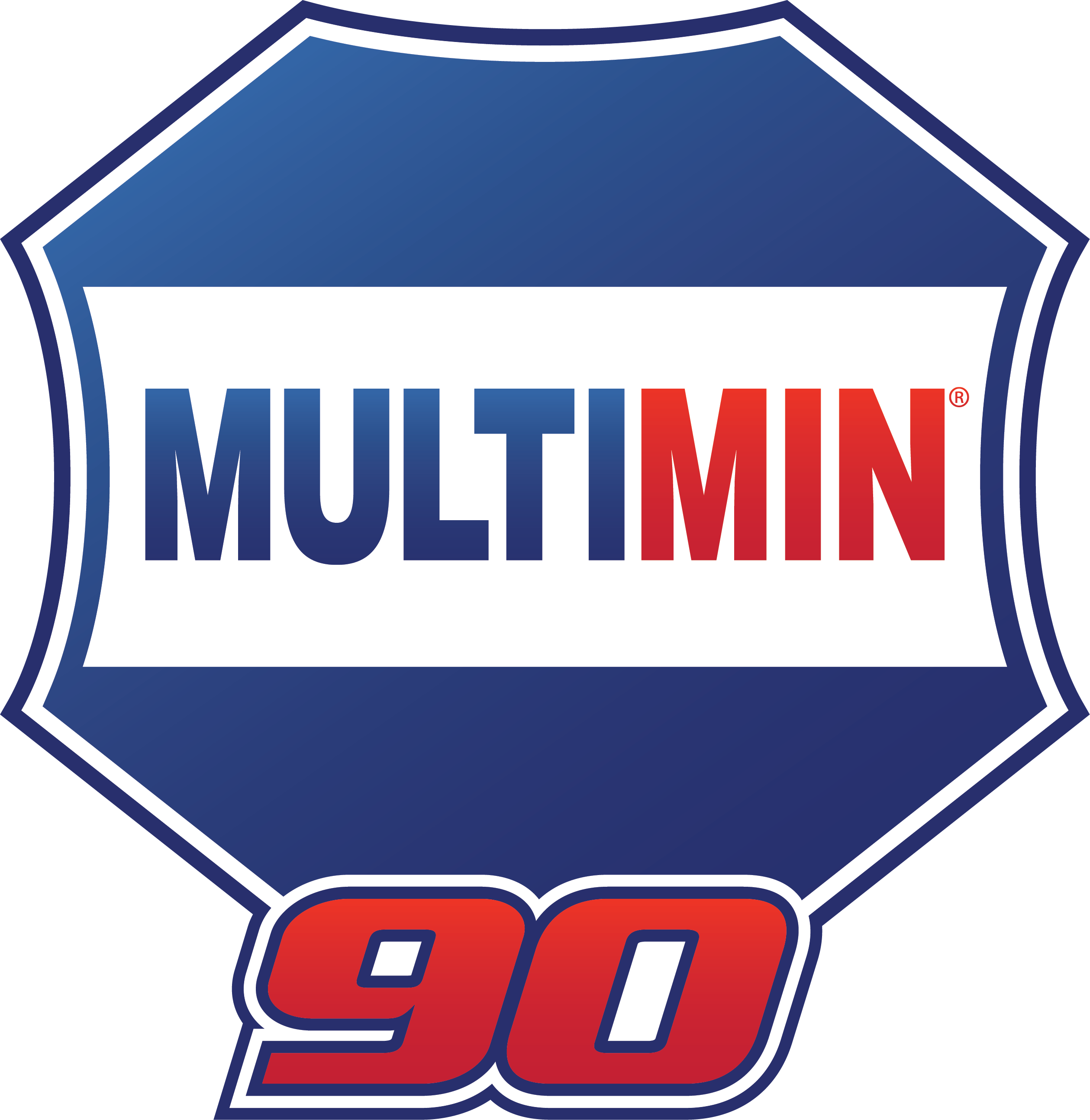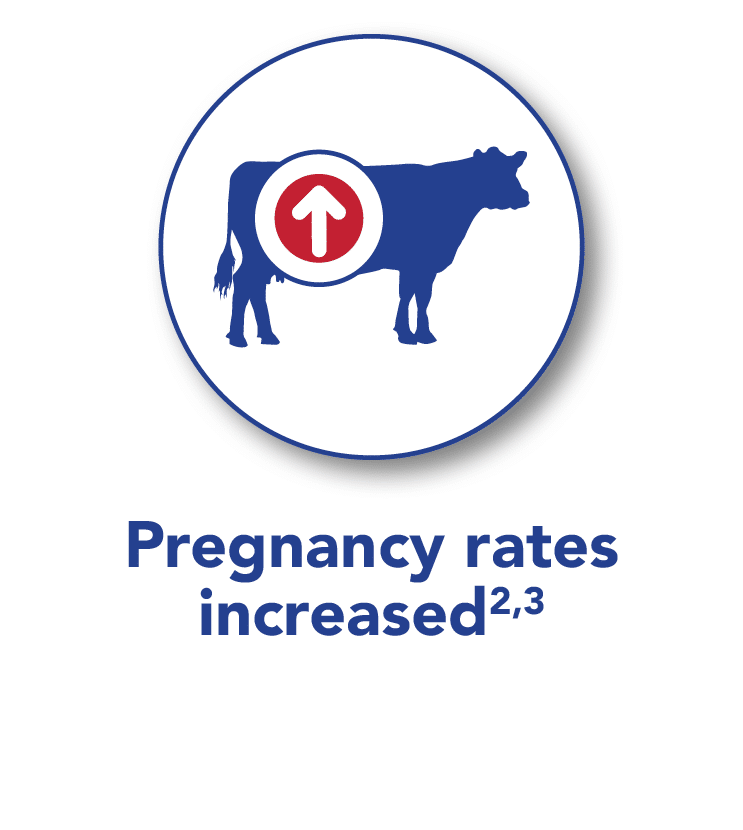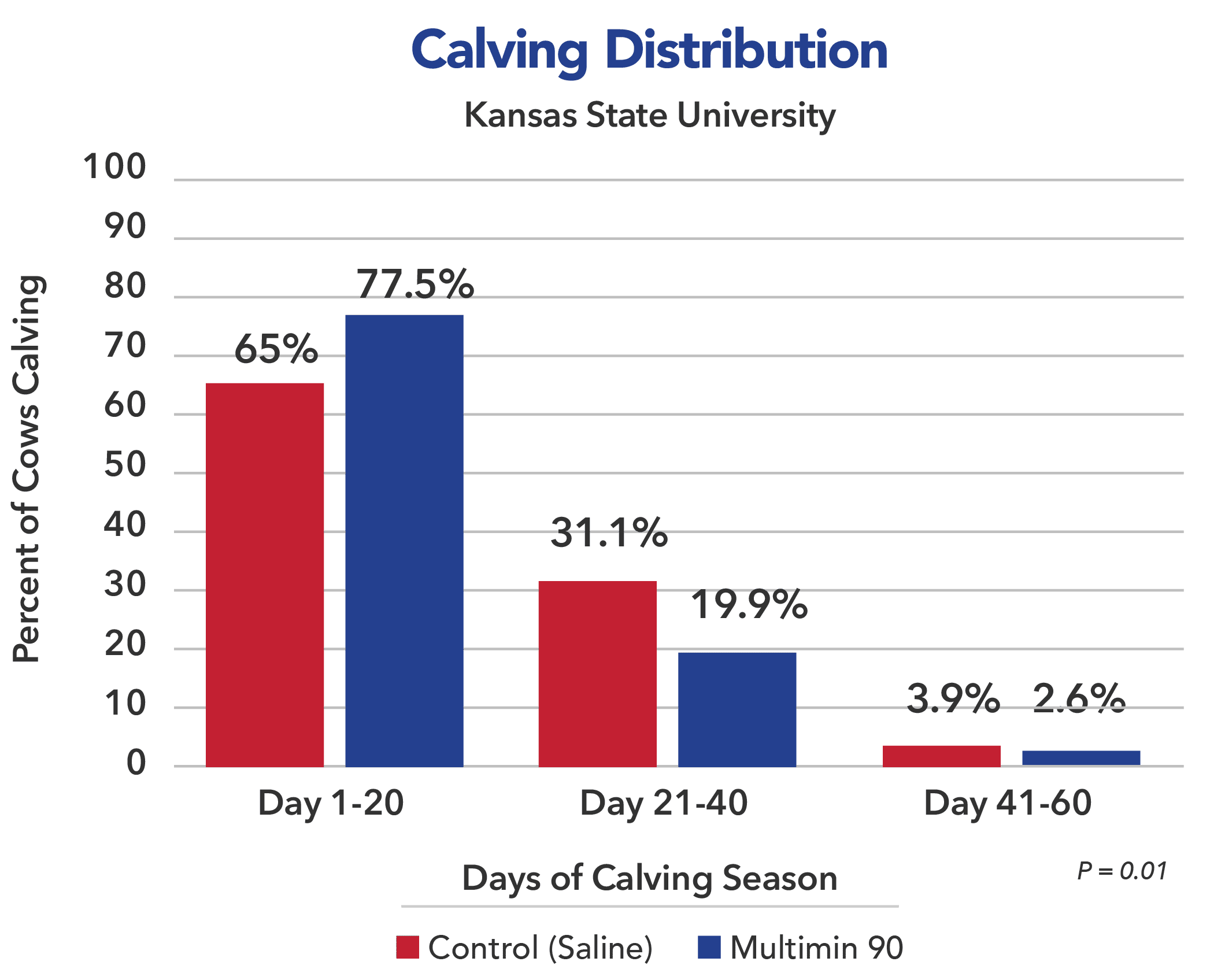

Order
Label
Safety Sheet
IMPORTANT SAFETY INFORMATION FOR MULTIMIN® 90: Federal law restricts the use of Multimin 90 to use by or on the order of a licensed veterinarian. Not for use in humans; keep out of reach of children. Multimin 90 has a preslaughter withdrawal time of 14 days after injection. Always follow label dose; do not overdose. See prescribing information.
Your Best Shot at Strategic Trace Mineral Supplementation
Supports breeding success
Multimin® 90 (zinc, copper, manganese, and selenium injection) is a proven, one-of-a-kind solution to provide trace minerals. Studies indicated that strategic trace mineral supplementation quickly improved the status of four key minerals in breeding stock, resulting in compressed calving distribution,1 increased pregnancy rates,2,3 and improved semen quality.4



Calving distribution compressed
When used in a breeding protocol, a university study1 demonstrated that improved trace mineral status leads to more calves in the first 20 days of calving. More calves born in the first 20 days of the calving season, due to improved conception rates, means more uniform groups, more pounds to sell and more heifers ready to breed sooner.

Pregnancy rates increased
Studies demonstrated that using strategic trace mineral supplementation with Multimin 90 in breeding health protocols increased pregnancy rates — including more successful embryo transfers2 and AI pregnancies1,3 — on both heifers and cows.


Semen quality improved
University data4 indicated strategic trace mineral supplementation with Multimin 90 helped bulls improve
selenium status to support sperm structure development and improve sperm motility and morphology at 12
months of age. These benefits prepared more bulls to pass breeding soundness exams (BSE). In fact, in this
study, using Multimin 90 yielded up to 3% more bulls passing BSE at 12 months of age.

Watch the video below to hear Dr. K.C. Olson, Kansas State University, discuss a recent study that indicated
improved sperm motility and morphology in young beef bulls with the use of Multimin 90.
Watch the video to learn more
Testimonials
"When you see a 5%–6% increase in conception rate with 700–800 cows, that is a bunch more
AI calves and that is where we find the big return on using Multimin 90 to optimize mineral
status in our breeding program."
- Tim ToddGREEN MOUNTAIN ANGUS
"Utilizing the same development protocols and procedures we have used for years with replacement development, strategic trace mineral supplementation allowed us to achieve 96.5% conception rate with a short calving window in an extreme drought year."
- Anton HermesHERMES LIVESTOCK
References
1Mundell, L.R., et. al. 2012. Prof. Anim. Sci. 28(1): 82-88. 2Sales, J.N.S., et al. 2011. Livestock Science. 3Stokes R.S., et al. 2017. American Society of Animal Science. 4Preedy, G.W., et al. 2018. Prof Anim. Sci. 34:1-9.





























